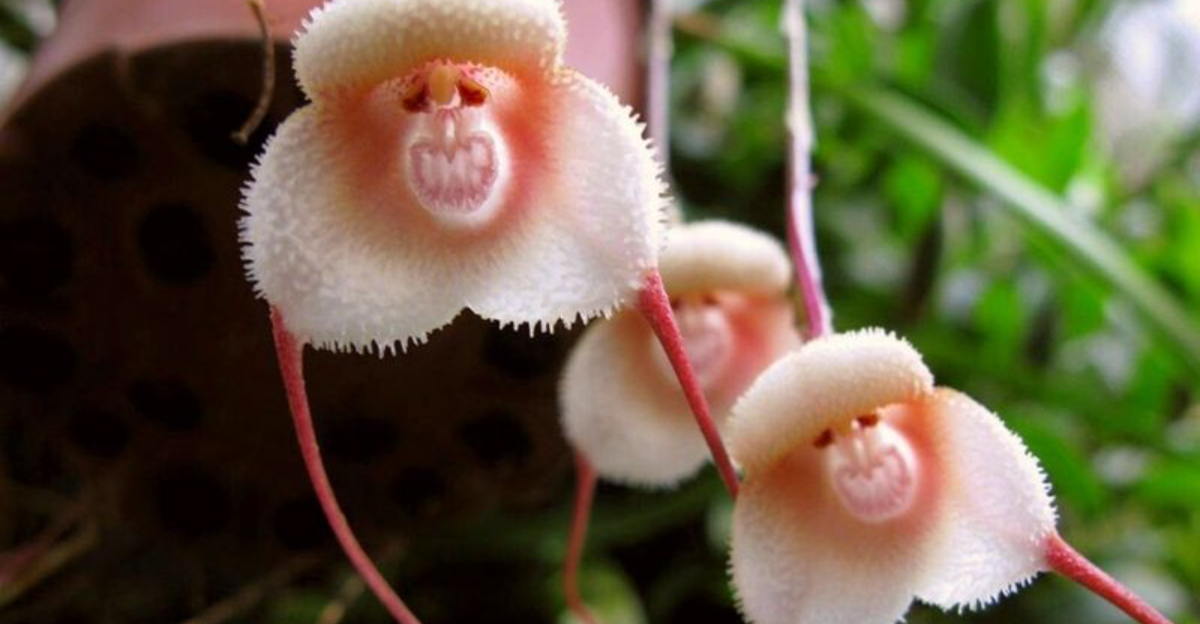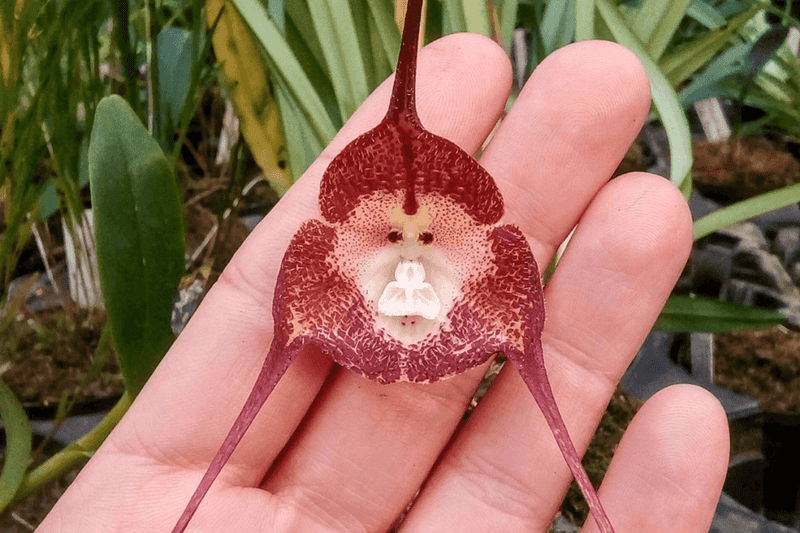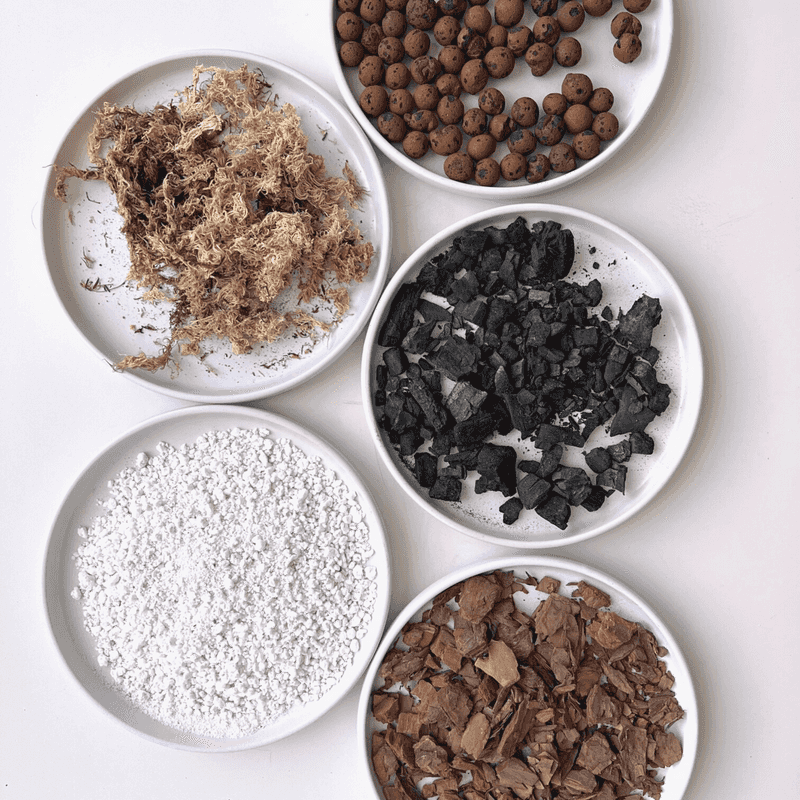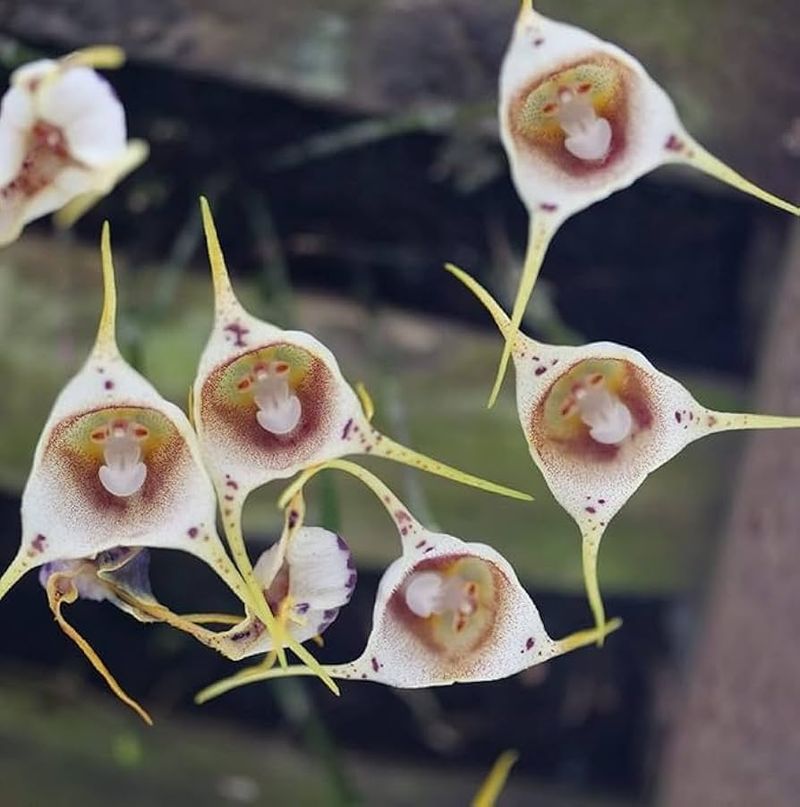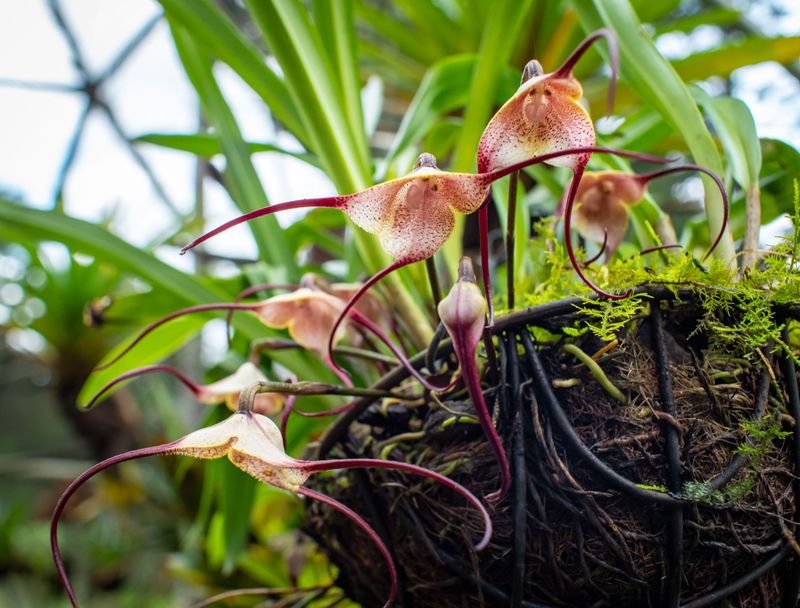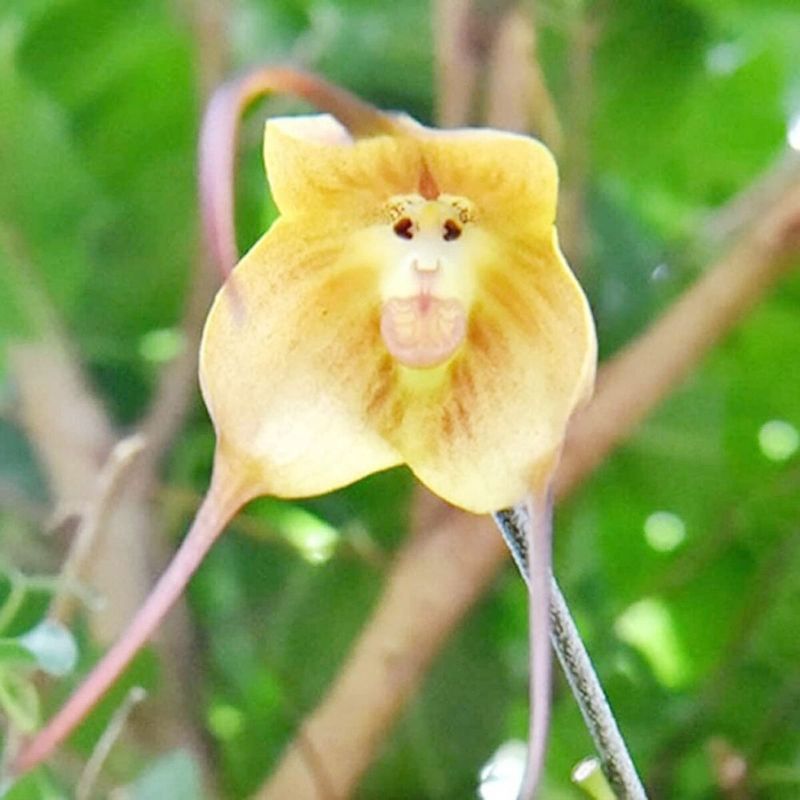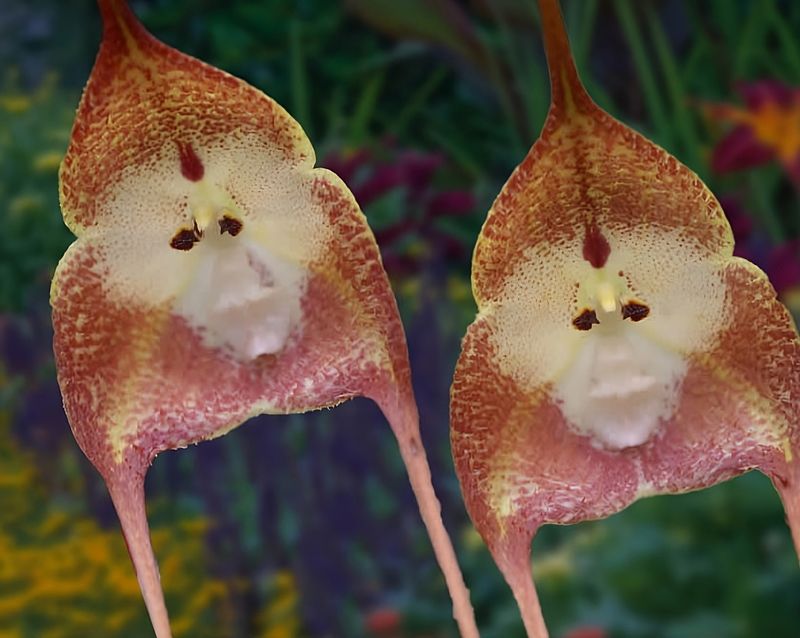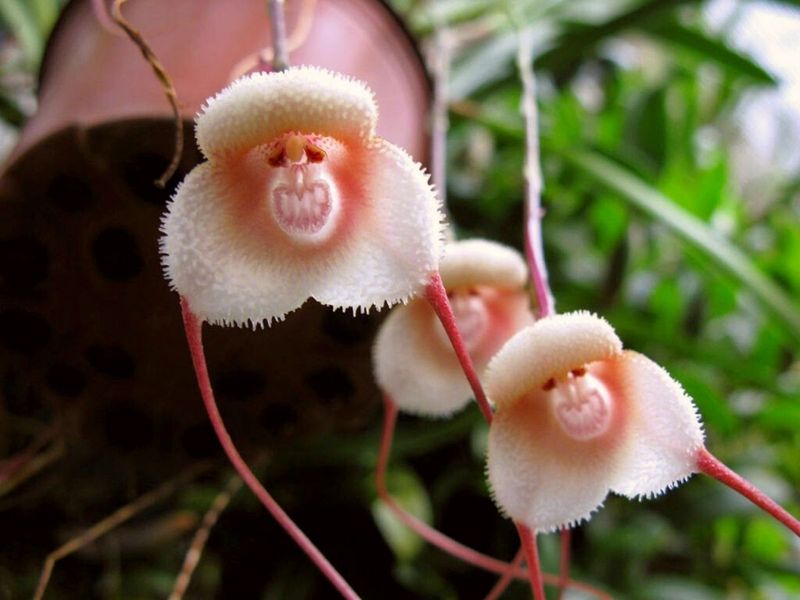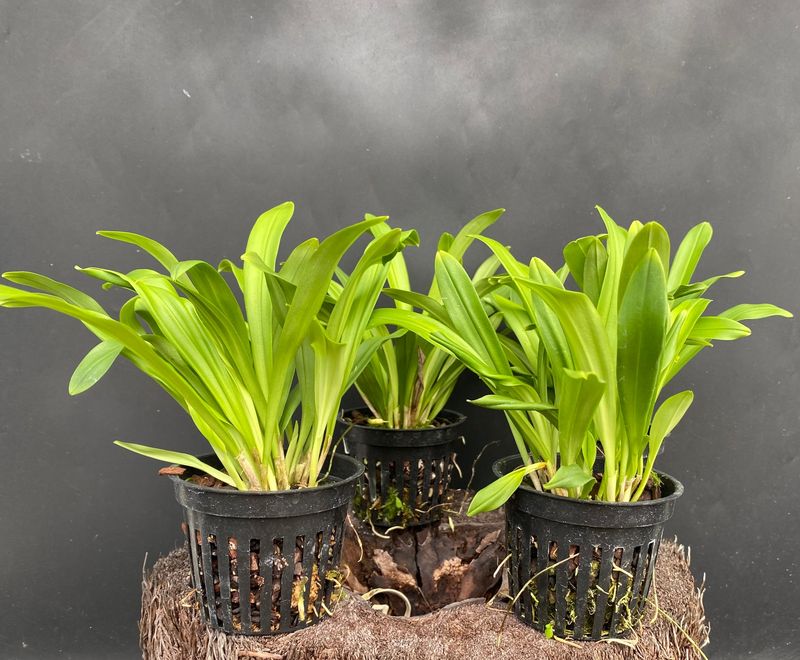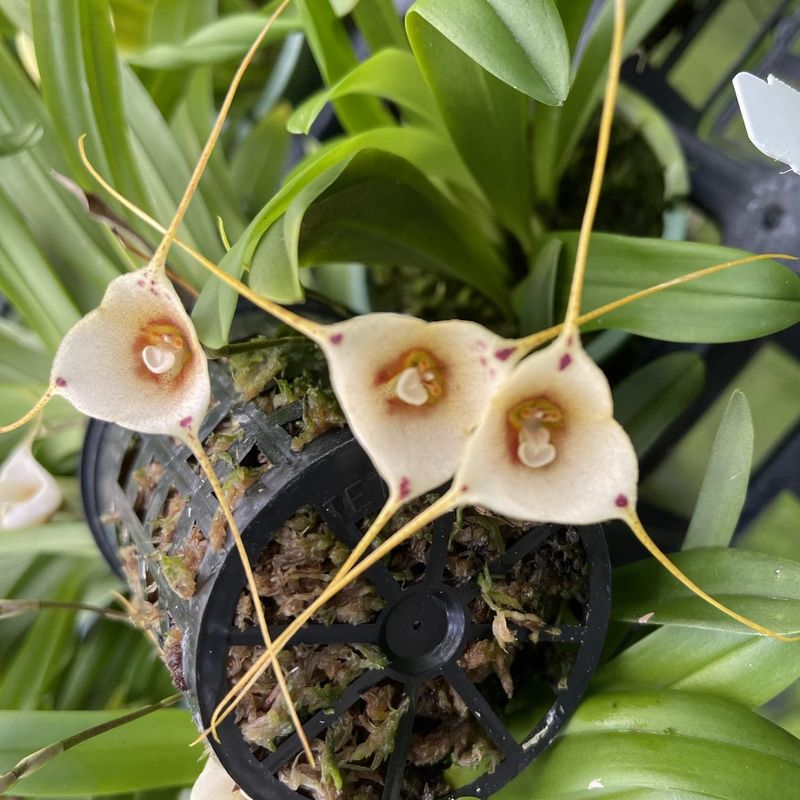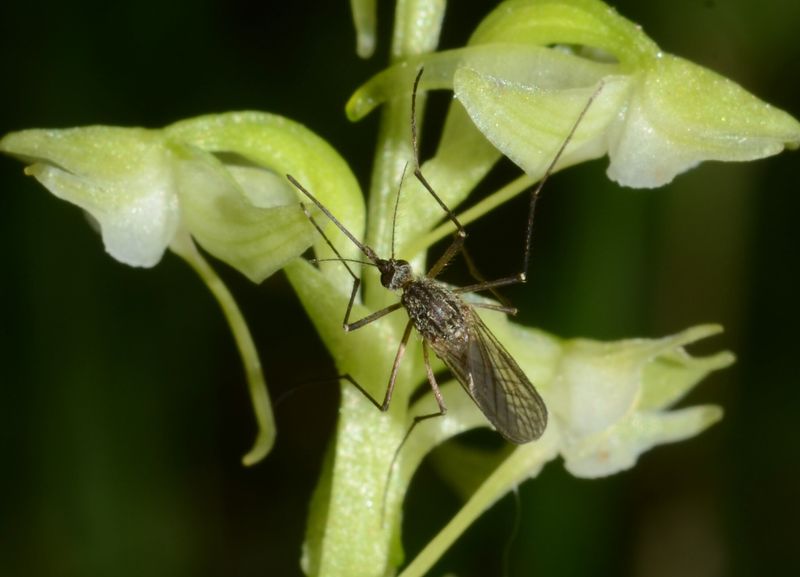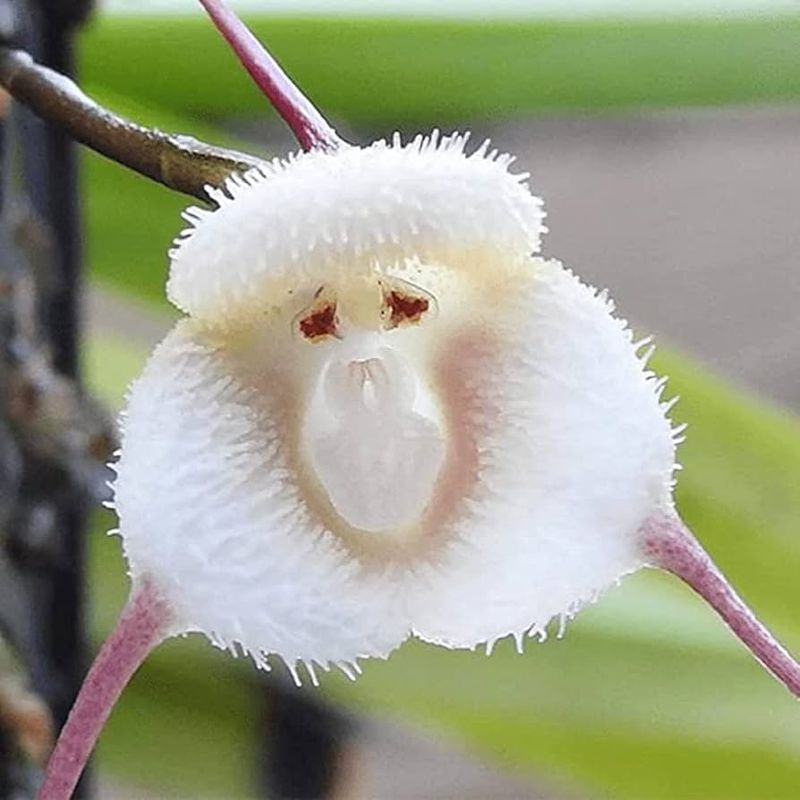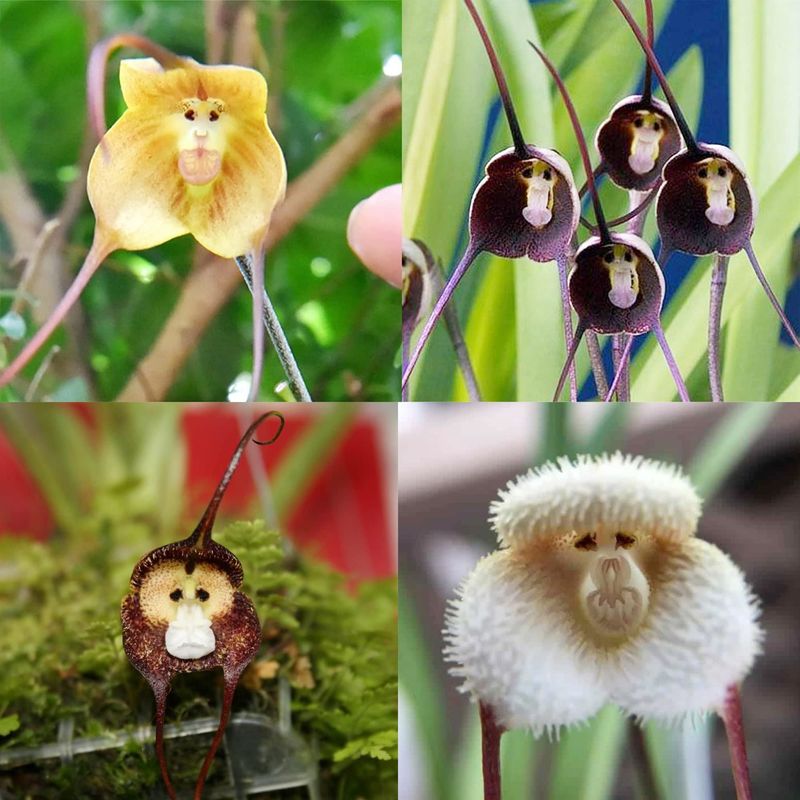Growing Monkey Face Orchids, often known by their unique appearance resembling a monkey’s face, is a rewarding endeavor for plant enthusiasts. Native to the cloud forests of Ecuador and Peru, these orchids thrive in specific conditions that mimic their natural habitat.
This guide provides twelve essential tips to help you successfully cultivate these rare and exotic blooms, focusing on creating the ideal environment, maintaining their health, and encouraging blooming.
Whether you’re a beginner or an experienced gardener, these tips will help you nurture your Monkey Face Orchids to their full potential.
1. Choose the Right Environment
Choosing the right environment is crucial for Monkey Face Orchids, which hail from the cool, humid cloud forests of Ecuador and Peru. Aim for temperatures between 50–77°F (10–25°C), ensuring your setup mimics these natural conditions.
High humidity levels, ideally between 70–100%, are necessary for optimal growth. If you’re growing indoors, consider using a humidifier to maintain these conditions.
The right environmental setting not only promotes healthy growth but also prevents stress on the plants. With proper care, you’ll create an ecosystem where your orchids can truly flourish.
2. Select the Best Growing Medium
Selecting the best growing medium is vital for Monkey Face Orchids. A well-draining orchid mix that includes sphagnum moss, perlite, and fine bark is ideal. This combination retains moisture without becoming soggy, supporting healthy root development.
Ensure the medium is aerated, allowing roots to breathe and absorb nutrients efficiently. Regularly check the medium for signs of degradation or mold, replacing it when necessary.
Proper medium choice not only boosts growth but also enhances water retention, creating a balanced environment for your orchids to thrive.
3. Provide Indirect Light
Monkey Face Orchids prefer indirect light, similar to the dappled sunlight of shaded forest floors. Position your plants where they can enjoy low to medium filtered light, avoiding direct sunlight that can scorch their delicate leaves.
If natural light is insufficient, consider using grow lights that replicate these conditions. Proper lighting not only protects the foliage from damage but also encourages healthy photosynthesis, promoting sustained growth.
Adjust lighting as needed to match seasonal changes, ensuring your orchids receive consistent illumination throughout the year.
4. Watering Needs
Meeting the watering needs of Monkey Face Orchids involves keeping the grow medium consistently moist but not waterlogged. Use distilled or rainwater, as tap water’s chemicals can harm these sensitive plants.
Watering should be done regularly, ensuring the medium dries slightly between sessions. Misting the orchids frequently helps maintain the high humidity they crave, especially during drier periods.
Proper watering techniques not only keep your orchids hydrated but also prevent root rot and other water-related issues, ensuring a thriving plant environment.
5. Maintain Proper Air Circulation
Proper air circulation is vital for preventing mold and fungal diseases in Monkey Face Orchids. In indoor setups, use a small fan to replicate natural airflow conditions found in their native habitats. This helps keep the plant environment fresh and prevents stagnation.
By ensuring good airflow, you reduce the risk of disease and enhance growth. Air circulation also aids in temperature regulation, helping orchids adapt to changes in the environment. Prioritizing this aspect ensures your orchids remain healthy and vibrant.
6. Feeding and Fertilization
Feeding and fertilization are essential for Monkey Face Orchids. Use a balanced orchid fertilizer, such as a 20-20-20 mix, applied at half-strength every two weeks. During winter, reduce feeding as the plant’s growth naturally slows.
This regimen supports robust development, providing essential nutrients without overwhelming the plant. Always follow the manufacturer’s guidelines, adjusting as needed based on your orchid’s specific needs.
Proper fertilization not only enhances growth but also encourages blooming, ensuring your orchids receive the nourishment they deserve.
7. Temperature and Seasonal Care
When it comes to temperature and seasonal care, Monkey Face Orchids prefer cooler settings. Avoid placing them near heaters or direct heat sources. If growing indoors, ensure stable temperatures throughout the year, closely aligning with their natural habitat.
Monitoring and maintaining these conditions is crucial, particularly during seasonal transitions. By providing a consistent environment, you minimize stress and encourage continuous growth.
This attention to temperature needs ensures your orchids remain healthy and bloom-ready, enhancing their overall beauty.
8. Choosing the Right Pot
Choosing the right pot is key for Monkey Face Orchids. Use slotted orchid pots or hanging baskets to ensure excellent drainage, a critical factor for root health. Clear plastic pots can also be beneficial, allowing you to monitor root development easily.
The pot should accommodate the orchid’s size, providing room for growth without overcrowding. By selecting an appropriate pot, you promote a healthy root system, crucial for nutrient uptake and plant stability.
Proper pot selection ensures your orchids remain vigorous and visually appealing.
9. Repotting When Necessary
Repotting is necessary for Monkey Face Orchids every 1-2 years, especially when the growing medium starts breaking down. This process involves gently replanting in fresh medium, ensuring minimal disturbance to the delicate roots.
Repotting is not only about providing fresh nutrients but also about preventing overcrowding. Handle the orchids with care during this process to avoid any damage.
Proper repotting techniques contribute to a thriving plant environment, supporting continued growth and vitality.
10. Managing Pests and Diseases
Managing pests and diseases is crucial for maintaining healthy Monkey Face Orchids. Common pests include spider mites and aphids, which can be controlled with neem oil or insecticidal soap. Regularly inspect your plants for signs of infestation or disease.
Prompt treatment keeps your orchids healthy, preventing damage and promoting robust growth. Implementing a proactive pest management strategy ensures your orchids flourish, reducing the risk of long-term issues that could compromise their health and appearance.
11. Encouraging Blooming
Encouraging blooming in Monkey Face Orchids can be a waiting game, as they may take several years to flower. Consistent humidity, temperature, and feeding play a significant role in promoting blooms.
Patience and persistence are key, as each plant has its own timeline. By maintaining optimal care conditions, you set the stage for beautiful blooms to develop. Focus on providing a stable environment to maximize your orchids’ flowering potential, transforming them into stunning showpieces.
12. Growing From Seeds or Divisions
Growing Monkey Face Orchids from seeds requires sterile lab conditions, making division the preferred propagation method. Carefully divide mature plants, ensuring each section has roots to sustain new growth.
This method is not only practical but also increases your plant collection efficiently. By following proper division techniques, you expand your orchid garden with healthy new plants ready to thrive. Embrace this method to propagate and share the beauty of Monkey Face Orchids.
